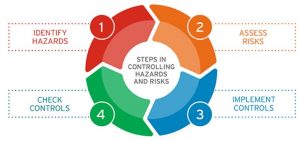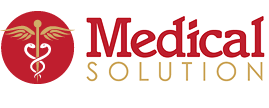No products in the cart.

Occupational Health and Safety and Environmental (OHS&E) compliance is essential for all Australian workplaces. In Australia, we have stringent OHS & E regulations in place to protect employees from potential hazards and ensure their well-being.
Whether you’re a business owner aiming to enhance workplace safety, a manager seeking practical compliance solutions, or an employee interested in fostering a safety-first culture, this blog will explore the world of OHS&E compliance in Australian businesses.
Occupational Health and Safety Compliance
First Aid in the Workplace Compliance Code, issued by Worksafe in November 2021 provides practical guidance for those who have duties under the Occupational Health and Safety Act 2004 (OHS Act) and the Occupational Health and Safety Regulations 2017 (OHS Regulations). The Code provides practical guidance to employers about how to comply with their duties under the OHS Act to provide adequate workplace facilities, in particular first aid facilities, for the welfare of employees.
Definitions:
- First Aid: First aid in the workplace is the provision of initial health care and basic life support for people who suffer an injury or illness at work.
The goals of first aid are to preserve life, alleviate suffering, prevent further illness or injury, and promote recovery. - First aid facilities: first aid rooms, first aid kits, and first aid equipment (including defibrillators).
- First aid officer: a person who has completed current and appropriate training, which is kept current, and has been nominated by the employer to perform that role in the workplace.
- First Aid Training: as a minimum, employers need to ensure that first aid officers hold a nationally recognised statement of attainment issued
by a registered training organisation (RTO) for the nationally endorsed first aid unit of competency Provide First Aid (HLTAID011), or a course providing equivalent skills. Additional Training recommended is training to assist someone experiencing a mental health crisis in the workplace Employers should consider offering employees training to help to provide initial, informal support when a person experiences a mental health crisis in the workplace. (read more here and register your interest)
Using the prescribed approach, the Code outlines that High-Risk workplaces should have one first aid kit, including specific first aid kit modules, for every 25 employees, and In low-risk workplaces, one first aid kit for every 50 employees.
Additional First Aid Equipment: Employers need to consider whether it is reasonably practicable to have an automated external defibrillator (AED) in the workplace.
Signage: Employers need to provide safety signs to ensure first aid facilities (including AED’s)are adequately signed. Signs should comply with AS 1319 Safety signs for the occupational environment, for example by including a white cross on a green background.
Maintaining first aid kits: Employers need to ensure that first aid kits are restocked as necessary. Employers need to have a system of work for reviewing and
restocking kits, and for ensuring that any items that may expire are replaced regularly. Kits should be checked quarterly and after every event requiring first aid.
What about Environmental Compliance?
Under the general environmental duty (GED), you must understand the risks from your businesses activities and how to address them as far as reasonably practicable. The EPA has the expectation that organisations will prevent liquid leaks and spills from entering the environment and minimise harm to people and the environment. Organisations can minimise harm to the environment if something goes wrong by installing adequate systems and control measures (e.g. fire alarms and extinguishers, overflow spill alarms, spill kits, etc.)
Use the EPA self-assessment tool to help you to check what actions you can take to manage the risks of your business causing harm to people and the environment. It isn’t a complete list of everything you can do, but it’s a good start.
How can Medical Solution Help?
So given all of the obligations to Occupational Health and Safety and the Environment it can be a bit overwhelming for organisations to ensure they are meeting their responsibilities. That’s where Medical Solution can help! We are not just a supplier of life-saving and environmental protecting products! We can assist you through the process of risk management by:

- Identify any hazards or activities at your business that could cause harm.
- Assess how severe the risk is, based on the likelihood of it happening and its consequence.
- Implement suitable risk control measures. This may be First Aid kits, signage, defibrillators, spill kits, and training
- Check controls regularly to make sure they are working. We implement a scheduled maintenance programme to ensure you have a system of work for reviewing and restocking First Aid and/or Spill kits. If you want more information on our comprehensive service programme register your interest here.
Whether you’re a business owner, manager, or an enthusiastic employee, understanding OHS & E compliance is vital for creating a safe and productive work environment. Working with Medical Solution will take the hassle out of finding multiple service providers and give you peace of mind. Our service programme is set and forget. We are reliable, informed, and professional. Call us today at 1300 136 158 to discuss your requirements.
